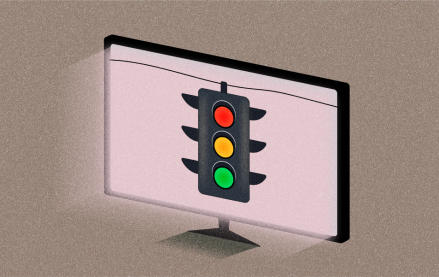Spiegel Online has a 10-person Snapchat Discover team

Snapchat Discover is just two weeks old in Germany, but publisher Spiegel Online is betting big on the platform to reach the app’s coveted young audience.
Spiegel Online, one of Germany’s largest news publishers and one of the Discover launch partners (along with Bild, Sky Sport and Vice), dedicated 10 people with text, video and motion design backgrounds to create a daily Discover edition, drawing from other parts of the company and new hires.
Ten people is a big investment for the company, especially given Snapchat is new and therefore relatively unproven in the German market. But while Spiegel Online has 18.3 million monthly online users (source: Arbeitsgemeinschaft Online Forschung, Germany’s equivalent to comScore), it struggles to reach the young audience that are Snapchat’s core users.
“Our reach of the 14- to 18-year-old audience is poor, so this is really a chance to translate the kind of content we do in a more visual way and reach a completely new audience,” said Torsten Beeck, head of social media at Spiegel Online.
Spiegel Online’s Discover team is still testing what kind of content works best on Discover, but it has focused on original content around hard news topics like politics, internet culture and business.
“There will be no entertainment. We believe there is a younger audience very interested in hard news,” said Beeck.
Snapchat has 53 million daily users across Europe, but it only breaks out figures for the U.K., where it claims to have 10 million daily users. In France, sources say there are 8 million daily users. When pitching to prospective Discover launch partners in Germany, Snapchat described how Discover has fared in France and projected how it would perform in Germany.
Spiegel Online’s plan is to give Discover six months, monitoring who’s reading the edition and for how long, then reassess whether it can justify continuing. If it can reach a seven-figure audience in that time, continuing will be a no-brainer. Beeck acknowledged that the venture is a risky one, though.
“We are not sure if we can make money from the advertising after half a year, but we will try it because we like the platform, and we believe we will find a way to reach a younger audience there,” said Beeck. “The worst case scenario is that we will learn a lot about users on a mobile platform, but I am confident this will work on both reach and later monetization.”
More in Media

What publishers are wishing for this holiday season: End AI scraping and determine AI-powered audience value
Publishers want a fair, structured, regulated AI environment and they also want to define what the next decade of audience metrics looks like.

Media giant Essence launches a marketplace for Black women-led brands
Essence has launched WeLoveUs.shop, a new online marketplace dedicated to Black women-led brands.

In Graphic Detail: The state of AI referral traffic in 2025
The stats reveal a new audience pipeline forming outside of traditional search and social platforms.








